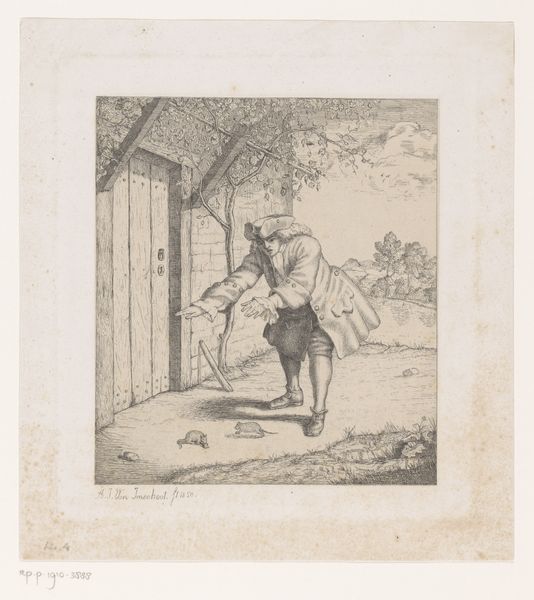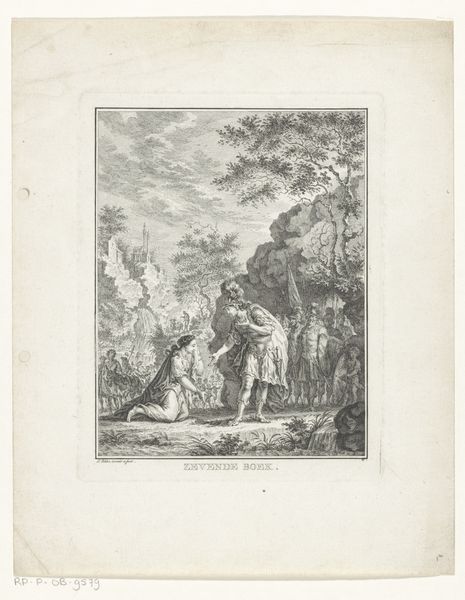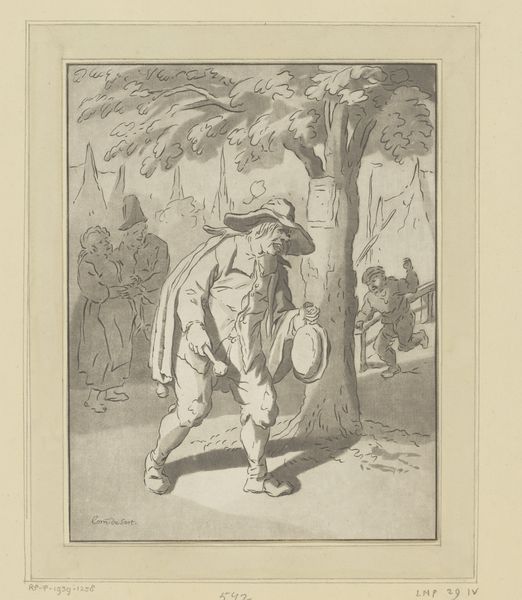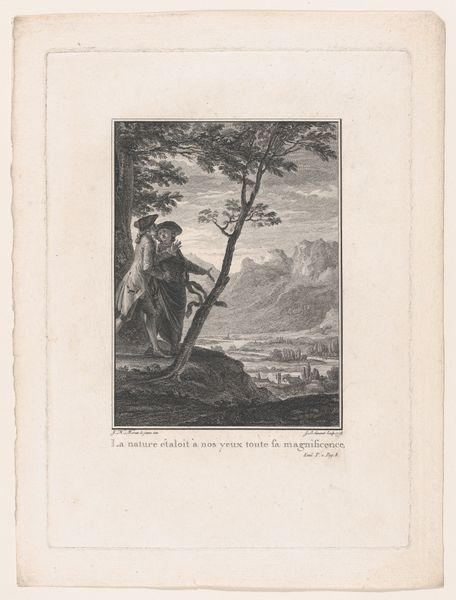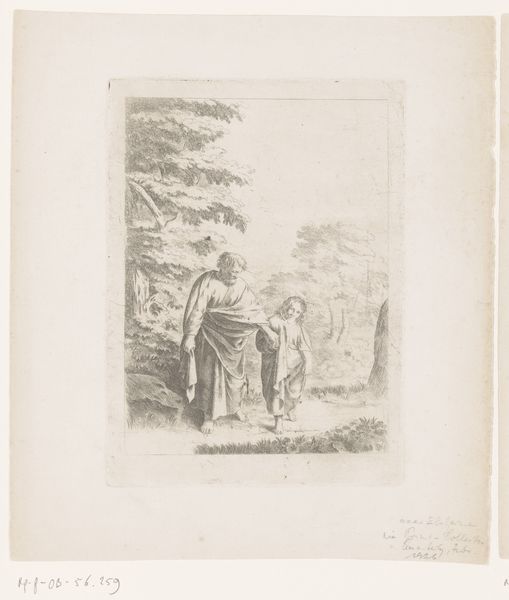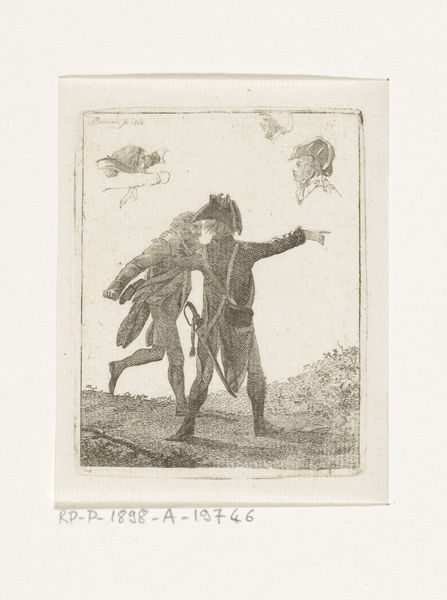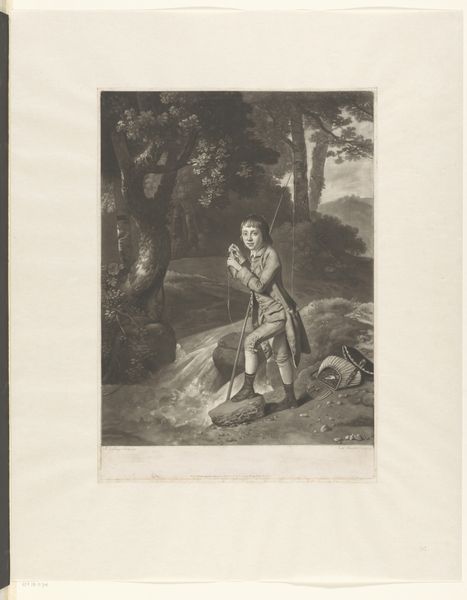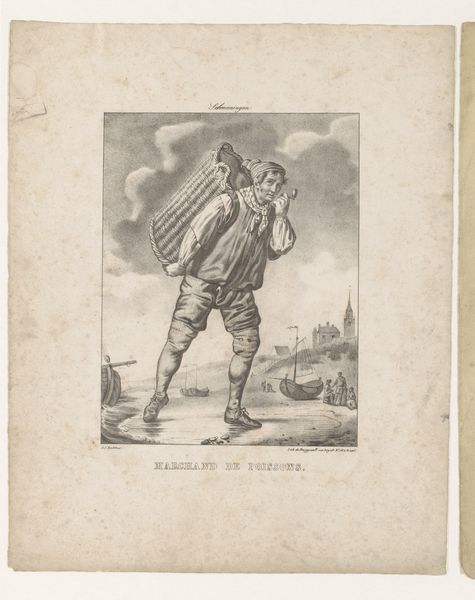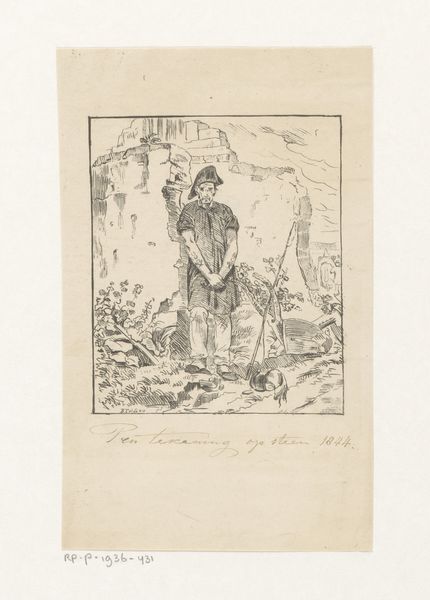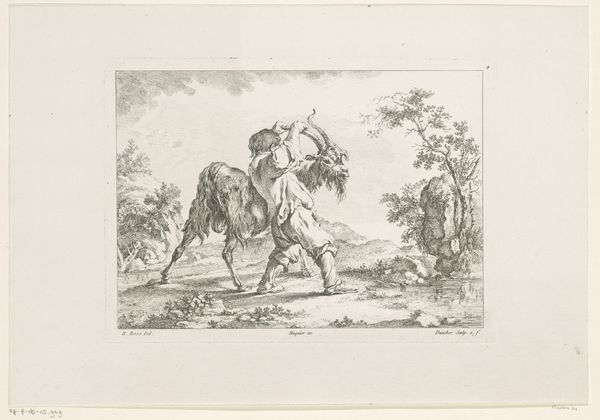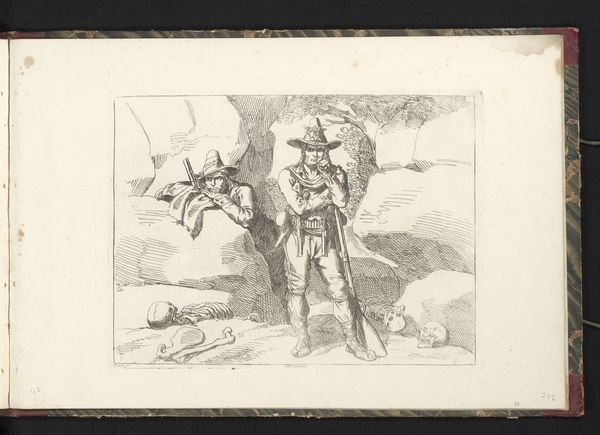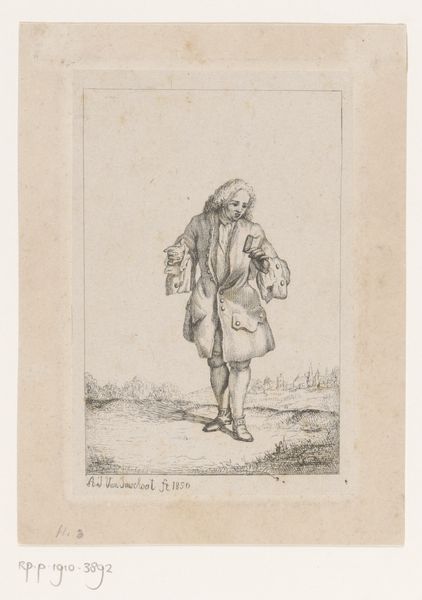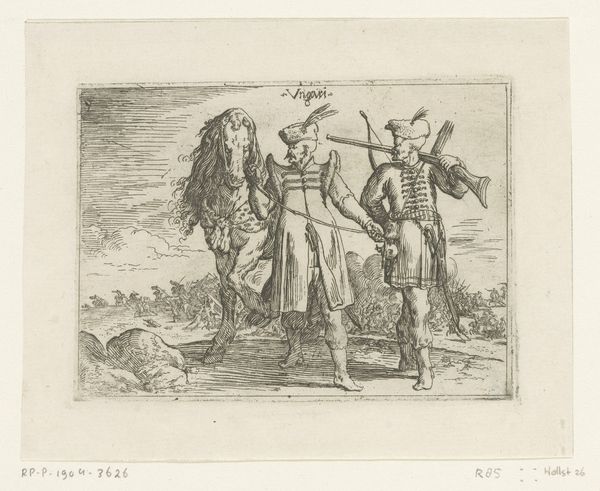
print, engraving
# print
#
old engraving style
#
landscape
#
figuration
#
romanticism
#
history-painting
#
engraving
Dimensions: height 232 mm, width 209 mm
Copyright: Rijks Museum: Open Domain
Curator: This is Joseph von Führich’s “Engel en oude man bewerken het land,” or “Angel and Old Man Working the Land,” an engraving from 1840. Editor: There's something quietly compelling about this. The delicate linework creates a rather dreamlike mood, even if the scene itself seems quite ordinary—an old man tilling the soil. Curator: Let's consider the engraving process. It demands precision, each line meticulously etched. How might this labour-intensive production mirror the laborious act depicted within the print? And the use of printmaking—how does this allow wider circulation of the image, spreading certain ideals of labor perhaps? Editor: The composition is quite striking too, though. The angel positioned behind the old man, seemingly guiding him. Notice the visual balance; the curvature of the angel’s wing against the stooped posture of the man creates a harmony despite their differences. There's a clear dynamic here between the earthly and the ethereal, captured purely through form. Curator: Right, and don't forget the broader Romantic context! Artists were increasingly engaging with nature, labour, and the ‘common man’. Führich likely intended a commentary on man's relationship to nature. The labour connects the old man, but also binds the artist to similar constraints, physical process and wider cultural concerns informing the creative result. Editor: I am interested in that direct visual contrast of the ruggedness of the land with the almost weightless quality given to the angel figure. It reinforces that this is not simply about depicting agricultural work, but about a deeper connection or intervention—divine assistance or guidance. This emphasis gives shape and reinforces the ethereal. Curator: Agreed. It becomes a commentary on the social and cultural significance of work itself, suggesting it's not just physical but somehow divinely sanctioned, legitimising a societal structure of labour? What do you make of the distribution format here, specifically that this work is an engraving? Editor: Ultimately, what remains with me is how Führich uses this traditional form, engraving, to create something truly transcendent and, dare I say, moving. The clarity of line gives this piece its timeless quality. Curator: It highlights that materials, their usage and distribution methods were as vital to meaning as any iconographic concern. The artist shapes ideology in practice and through output of a finished engraving.
Comments
No comments
Be the first to comment and join the conversation on the ultimate creative platform.
